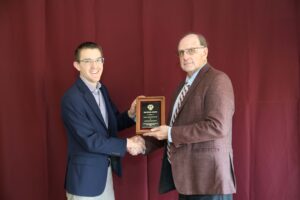August 2024 Newsletter now online
August 7th, 2024
Check out our newest August graduates are and learn about the latest news and activities within the department with our latest Soil and Crop Sciences Newsletter! View the August 2024 Newsletter

August 7th, 2024
Check out our newest August graduates are and learn about the latest news and activities within the department with our latest Soil and Crop Sciences Newsletter! View the August 2024 Newsletter
July 30th, 2024
The department will celebrate our summer 2024 graduates during commencement on Aug. 10-11. We are very proud of everyone’s efforts and wish each of you the very best in the next phase of your lives! Undergraduate Students Graduate Students

May 10th, 2024
See who our newest May graduates are and learn about the latest news and activities within the department with our latest Soil and Crop Sciences Newsletter. View our newsletter

May 9th, 2024
Join us in congratulating senior plant and environmental soil science major Chris Barron for receiving the Brown Foundation-Earl Rudder Memorial Outstanding Student Award. The award is the highest honor bestowed upon a graduating senior and honors a student who exemplifies the leadership, patriotism, fortitude, courage, humility, love of Texas A&M University and the willingness to… Read More →
May 3rd, 2024
The department celebrates our newest graduates for the Spring 2024 semester during May graduation. We are proud of you for the efforts you have made throughout your time with the department and wish each of you the very best in the next phase of your lives! Undergraduate Students Graduate Students

April 24th, 2024
The department congratulates all our students who received scholarships and awards during its annual awards and recognition banquet held on Thursday, April 11 at the Hildebrand Equine Complex. Elsa Murano, Ph.D., director, Norman Borlaug Institute for International Agriculture and Development, Bryan-College Station, delivered the keynote address. The 2023-2024 Soil and Crop Sciences Outstanding students were… Read More →
March 20th, 2024
Check out our latest news on the latest faculty and staff news, awards, and events that are happening with our March 2024 Newsletter. Read more at https://tx.ag/SCSCMar24Newsletter

February 28th, 2024
More than 150 faculty, staff and students participated in the 10th annual Texas A&M Plant Breeding Symposium, which is part of the Corteva Symposia Series. We also had several students who presented their research in poster or oral presentation competitions. We also had three students from other universites who were awarded travel scholarships who presented… Read More →

January 17th, 2024
Congratulations to all our faculty, staff and students who received awards during the Department of Soil and Crop Sciences’ annual meeting held on Jan. 11 at the Scotts Miracle-Gro Turfgrass Research Facility in College Station. Kevin McInnes, Ph.D., and David Stelly, Ph.D. were recognized for their years of service with the university. Stelly has been… Read More →
December 15th, 2023
Check out our latest news on December graduation, as well as other things that are happening with our December 2023 Newsletter. Read the December 2023 newsletter